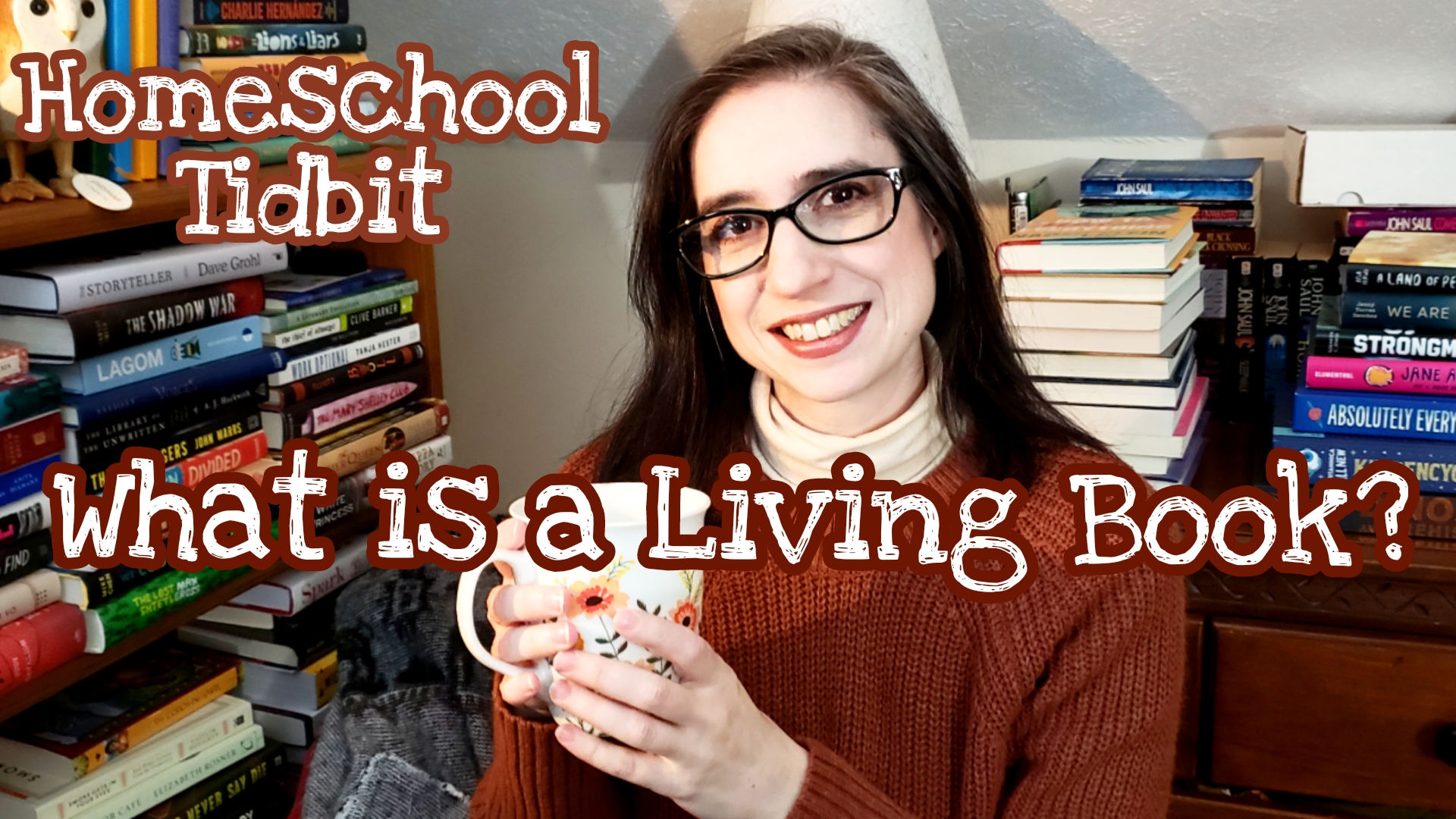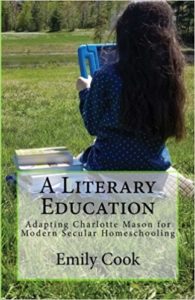Homeschool Tidbit: What is a Living Book?
January 14, 2022
 Welcome to Build Your Library’s “Homeschool Tidbits: Episode 2 – What is a Living Book?” In this new weekly video series, I will delve briefly into a topic related to homeschooling and will share some of my knowledge and expertise as a long-time homeschooling mother of 4 children. Three of whom have graduated!
Welcome to Build Your Library’s “Homeschool Tidbits: Episode 2 – What is a Living Book?” In this new weekly video series, I will delve briefly into a topic related to homeschooling and will share some of my knowledge and expertise as a long-time homeschooling mother of 4 children. Three of whom have graduated!
Last week I gave you What is the Charlotte Mason Method? (or Charlotte Mason in a Nutshell). Today, we’re going to be diving into my favorite component of her methodology – Living Books.
I’ve you’ve spent any time at all in the homeschool world, you’ve heard people throw around the words living books and twaddle. But what do those words mean? How can a book be alive?
What is a Living Book?
Let’s start with some definitions. A living book is one that was written by one person who has a deep passion for the subject they are writing about. It’s a book that draws you into the story, captivates your imagination, makes you to care about the subject or characters, and gets you to think. A living book should enrich your life in some way, either by teaching you something new or expanding your point of view. Think about the books you’ve read in your life that have really stuck with you – these are living books. A living book is one that changes you just for having read it.
“And all the time we have books, books teeming with ideas fresh from the minds of thinkers upon every subject to which we can wish to introduce children.”
— Charlotte Mason
Charlotte Mason said we should offer our children a feast of ideas. That feast, most often, will come from living books. Children learn best through stories. So, offer them the best stories and tales to enrich their education.
But how does one choose a living book from the millions of options on the market today? We live in a time of plenty. There are so many options that it can feel impossible to sift through them all.
I have a test I like to give to a book to determine if it is a living book. I’ll ask myself:
- Is this book well written?
- Is it narrative, or written by one person passionate about the subject matter?
- Am I still thinking about it days and weeks after reading it?
- Did the story captivate my imagination?
If the answers to most or all of these questions are all yes – this book qualifies as a living book and it earns a place on my bookshelves.
Twaddle?
Now the opposite of a living book is “twaddle.” I think there tends to be a lot of book snobbery in most Charlotte Mason circles. There is also a lot of confusion over what constitutes as twaddle.
Since twaddle is the opposite of a living book, it is easy to define. Twaddle is poorly written, it is a book that talks down to children or lectures at them. It’s a dull text written by a committee rather than one passionate author. It’s quickly forgotten commercial fluff.
Now you can see how easy it is to decide something popular and modern would fall under the category of twaddle. But just because a book is new does not mean it isn’t living!
Nor should we seek to completely eliminate twaddle from our children’s lives. I see no reason to become the book police for my kids or for you. Like cookies or candy, twaddle won’t hurt your child unless it is all they consume. So if you are visiting the library and your daughter chooses a Paw Patrol picture book or Diary of a Wimpy Kid, let them have those books to read.
But be sure to also choose something you consider living – if they enjoy stories about dogs, maybe you could also offer them Because of Winn Dixie by Kate DiCamillo or Ribsy by Beverly Cleary. By offering them balance, they will learn to choose better books on their own. AND they will have the freedom to read what appeals to them at the moment. Everyone needs a fun, fluffy read once in a while.
Classifying Living Books
Something else to note here that I don’t think gets said enough – living books can be subjective. I don’t think anyone would dispute that The Hobbit is a well-written novel. J.R.R. Tolkien was a genius and created an amazing world for his stories. However, if your child finds it incredibly dull or too challenging to get through – for them, it isn’t a living book and they shouldn’t be forced to read it.
Pushing your children to read things that either bore them or that are too difficult will only make them dislike reading. Just because a book is on a list of living books your child should read or even scheduled in your homeschool curriculum, doesn’t mean that they have to read it. Let them guide you.
Also, don’t assume that because you didn’t enjoy it, they won’t either. I can’t tell you the number of times I’ve seen parents say that they were skeptical of a book listed in Build Your Library but then their child ended up loving it. My rule has always been that we have to give a book a few chapters before we can determine if it is worth continuing or if we are going to set it aside.
Using Living Books in Your Homeschool
Living books should form the foundation of your child’s education. They aren’t just fiction stories, but they can encompass all subjects, from history and science to art, music, language, and even math! This is what Charlotte Mason meant by offering children a feast of ideas. Combining living books with short lessons and a wide variety of topics – you can read amazing quality books across subjects. This offers them the chance to make their own connections in their learning!
Living books help to peg information in your child’s mind. An example could be when they read a particularly riveting story about the Revolutionary War. They may then be more likely to remember that time period more vividly than if they just read a short passage from a textbook. This is why I like to add living books to subjects like math and science. Good stories can really help cement ideas into their minds in ways that a dull textbook cannot.
Living books nurture imagination, captivate, and transmit ideas, rather than just facts. These are the books you will want to hang on to and pass down to your grandchildren.
A child’s intercourse must always be with good books, the best that we can find. We must put into their hands the sources which we must needs use for ourselves, the best books of the best writers. For the mind is capable of dealing with only one kind of food; it lives, grows, and is nourished upon ideas only; mere information is to it as a meal of sawdust to the body.
– Charlotte Mason
Coming up next…
Now that you have a working definition of living books, next week’s Homeschool Tidbit will again discuss living books, but a bit further.
What do you do now that you have a big stack of “living books”?
I’ll give you some tips and pointers about how to implement living books in your homeschool. Until then, happy reading!
See Also:
Charlotte Mason in the Secular Homeschool
A Literary Education book
About Build Your Library
Homeschool Tidbits: Build Your Library’s Weekly Video Blog Series
 Emily Cook is the author and creator of the secular homeschool curriculum Build Your Library, a literature-based K-12 program infused with the teachings of Charlotte Mason. She writes full-year lesson plans as well as shorter topical unit studies. Emily has been homeschooling her four children in Southern NH for 21 years. She is passionate about reading aloud to children of all ages and loves to share her love of literature with others. She and her family also make incredibly dorky videos about homeschooling, books, and more on Youtube at ARRRGH! Schooling. You can follow her on Facebook, Twitter, and Pinterest. You can also check out her author page on Amazon.
Emily Cook is the author and creator of the secular homeschool curriculum Build Your Library, a literature-based K-12 program infused with the teachings of Charlotte Mason. She writes full-year lesson plans as well as shorter topical unit studies. Emily has been homeschooling her four children in Southern NH for 21 years. She is passionate about reading aloud to children of all ages and loves to share her love of literature with others. She and her family also make incredibly dorky videos about homeschooling, books, and more on Youtube at ARRRGH! Schooling. You can follow her on Facebook, Twitter, and Pinterest. You can also check out her author page on Amazon.

I just have to tell you that I am so happy that I accidentally found this curriculum through social media. Its been so amazing and such a great fit for our family of avid readers. Thank you also for giving me the words I’ve been looking for – “living books,” to describe that type of books that I want for our family. My only wish is that we could read faster! Thank you. Thank you. Thank you!